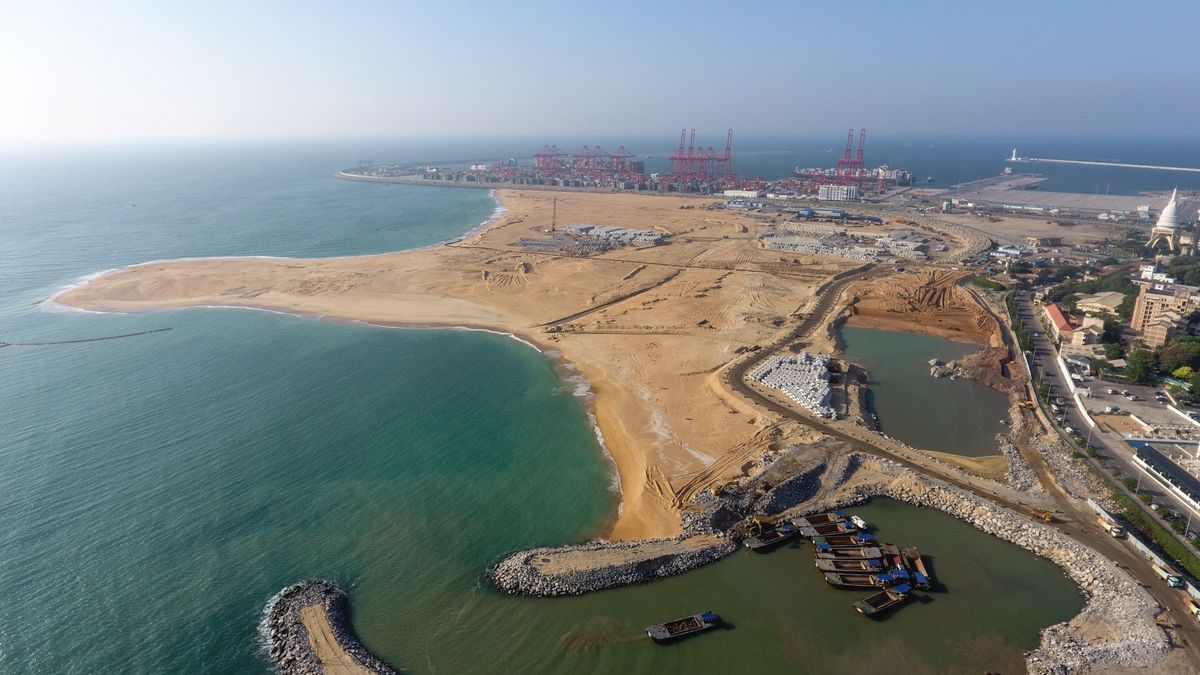U.S. Development Agency to Finance Sri Lankan Port in Bid to Counter China's BRI

The Lede: On Wednesday, the U.S. announced that it would be orchestrating $553 million in financing through a development agency to build a deep-water container terminal in Sri Lanka’s Port of Colombo as Washington steps up its competition with China in international development financing.
What We Know:
- The U.S. International Development Finance Corporation (DFC) will make a direct loan of $533 million to the consortium developing the terminal. The Washington, DC-based DFC, formed during the Trump administration, is a federal agency that packages private-sector money for projects that are strategic to U.S. policy abroad.
- The facility is 51% owned by India’s largest port operator, Adani Ports & Special Economic Zones Ltd. The other partners are Sri Lanka’s John Keells Holdings with a 34% share and the Sri Lanka Ports Authority with 15%.
- Scott Nathan, chief executive of DFC and Karan Adani, the chief executive of Adani Ports held a news conference in Colombo regarding the project. They described how the loans demonstrated the commitment from both the U.S. and India to Sri Lanka and the region in general without mentioning China by name.
- The Port of Colombo handles more than 30 million tons of cargo a year. The new planned terminals are expected to quadruple the port’s capacity.
The Background: Under China’s Belt and Road Initiative (BRI) in the past decade, Beijing extended loans for infrastructure projects in order to shore up ties with countries around the world, including Sri Lanka. As part of BRI, Chinese banks and engineering firms built a controversial deep-water port at the island’s remote southern shore at Hambantota. Without the means to repay the Chinese loans, the port was forfeited to China under a 99-year lease. This has become the prime example of China’s so-called ‘debt-trap diplomacy.’ India and the US have expressed concerns in recent years that China’s influence in Sri Lanka’s ports could give Beijing a strategic foothold in the region. Last year, the port hosted a Chinese research ship that India accuses of spying. The DFC was created to pay for international infrastructure projects in cooperation with the State Department as a means of supporting U.S. foreign policy and countering China’s influence in the same field. Last year, Sri Lanka became the first Asia-Pacific country in more than two decades to default on its foreign debts.
Likely Outcomes:
- The results of China’s BRI investments into Sri Lanka’s ports have likely run their course for now as the Hambantota project has garnered a poor reputation over the years. Yet, China has recently formulated more focused Global Initiatives alongside BRI, while also mulling the potential to expand financial influence through Chinese overseas branch banks in BRI affiliated countries. Sri Lanka may keep this type of interaction with China at arms length while embracing the U.S. and India’s offers for now, though this pendulum may swing back further down the line.
- This project could be a flagship project for the U.S. infrastructure investment push to counter China’s BRI. Given Sri Lanka’s reputation for being a victim of China’s ‘debt-trap diplomacy,’ the U.S. may put extra effort to make an example out of this port to demonstrate its own efficacy in comparison. This would also bode well for the Biden administration’s Partnership for Global Infrastructure Investment (PGII) that is also aimed at countering China with the same strategy.
Quotables:
“We believe [the PGII] is providing them alternative funding to help their own economies and their own people, so that they don’t have to rely on the Belt and Road Initiative, which is pretty high-interest and low results so far.” - John Kirby, spokesman for the White House National Security Council
“Beijing is squaring the circle between safety and speed. It is several steps ahead of its competitors in the global infrastructure market. It is laser-focused on giving leaders in the developing world exactly what they want: rapid delivery of big-ticket infrastructure projects without unreasonably high levels of risk. Whether the U.S. will be able to do the same is a big question mark.” - Bradley Parks, executive director of AidData
Good Reads:
U.S. Finance Agency Lends to Sri Lankan Port to Counter Chinese Influence (NYT)
US plans to build a $553 million terminal at Sri Lanka’s Colombo port in rivalry with China (AP)
US lends $553mn to majority Adani-owned port in Sri Lanka (FT)
